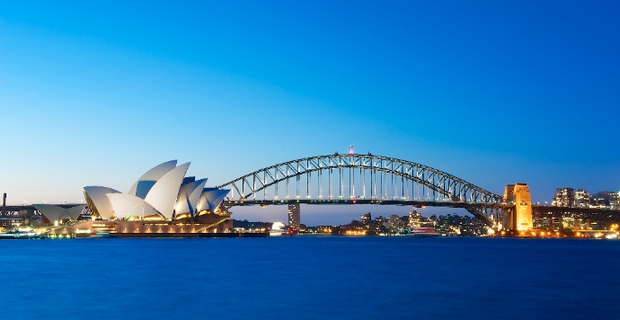ATMOsphere Australia to showcase more CO2 case studies

The ATMOsphere Review Panel has selected new speakers from SCM Frigo, CAREL Australia, Emerson, CRS, KAV Consulting and Kawasaki Heavy Industries to be presented at ATMOsphere Australia 2017.
Taking place in Luna Park, Sydney on 2 May, ATMOsphere Australia 2017 represents a unique opportunity to connect with more than 180 HVAC&R stakeholders, policymakers, end users and many more industry professionals.
Topics include updates on regulations and standards in Australia and New Zealand, training, and the newest technology trends.
“Our second selection of technology case studies highlights the strong position of CO2 technology across sectors and continents. I’m delighted to see another six technology leaders share their experience of transcritical CO2 systems in both commercial and industrial refrigeration, as well as tackling the ultimate challenge: introducing natural refrigerants to the air-conditioning sector. Look out for our final round, coming soon! The first ATMOsphere in Sydney will be packed with great business cases for natural refrigerants,” said Jan Dusek, Business Development Manager (APAC), shecco.
The new presentations are:
SCM Frigo: Improving the energy efficiency of CO2 refrigeration system by Mirko Bernabei
This case study refers to a test SCM Frigo has done on a booster unit equipped with all the technology available today, measuring the different performances. The test has been carried out in a certified LAB in Italy (IMQ lab in Amaro, Udine) in compliance to EN 14511:2013.
The presentation will discuss how both parallel compression and mechanical sub-cooling solutions appear to be convenient solutions for reducing commercial refrigeration CO2 system limits in warmer climates; where, as a matter of fact, both efficiency and refrigeration capacity of the transcritical single compression cycle undergo a rapid deterioration.
CAREL Australia: Transcritical CO2 systems for supermarket applications in Australia by Iain Skelton
Eight transcritical CO2 installations are currently installed in NSW, VIC, QLD & WA. All of these installations are operating successfully using the CAREL transcritical controls solution. The presentation will give an overview of the necessary components, controls and systems supplied to these projects. Furthermore, Skelton will discuss investments in technology and innovation while creating solutions to practically eliminate the ‘climate barrier’ for transcritical CO2 systems in warmer climates.
Emerson: The Helix Innovation Center – providing infrastructure to enable natural refrigerants adoption by Abel Gnanakumar
Helix Innovation Center provides a real life scenario to evaluate the different strategies to accomplish towards sustainability, for developing training content and hands on training. The center incorporates facilities to replicate a residential home, light commercial building, food service operation and supermarket. The investment provides an excellent opportunity for multiple stakeholders to come together, brainstorm, and develop data-driven justifications in controlled conditions while simulating real-life scenarios.
This presentation of the transcritical CO2 system strategies evaluation planned in Helix Innovation Center will be of interest to end users, consultants and system integrators, given the warm to hot summer in the region.
CRS (South Africa): Blast freezing of avocados with CO2 by Wynand Groenewald
This case study explores the project designed, manufactured and installed by CRS, located in Johannesburg, South Africa. The facility employs a blast freezer application with a full CO2 system. Its features include conveyor belt solution, with flooded evaporation system, making use of liquid reticulation at a evaporating temperature of -44°C.
KAV Consulting: Two CO2 projects with evaporative condensers by Klaas Visser
The company has recently completed the design of two Multi Function Two Stage Transcritical CO2 Refrigeration Systems with Parallel Compression (MF2STCCO2RSPC) employing evaporative condensers.
The first project is currently under construction at a Cook Freeze facility north west of Sydney with a design capacity of 18,000 meals/day, equating to about 12 tonnes/day. The system performs eight refrigeration functions and five heating functions.
The second project is the design of a MF2STCCO2RSPC for a 42,000 m3 −30°C cold store in Malaysia. This system performs five refrigeration functions and four heating functions. This system demonstrates that efficient CO2 refrigeration application is possible the world over if evaporative condensers/gas coolers are used.
Kawasaki Heavy Industries: Kawasaki turbo chiller using R718 (water) as refrigerant by Hayato Sakamoto
Kawasaki has developed turbo chiller using natural refrigerant of R718 (water) as refrigerant for air conditioning applications. Its refrigeration capacity is 100USRt (352kW) and COP is 5.1 at 30°C of cooling water temperature. Besides adoption of R718 (water) as a refrigerant, the Kawasaki turbo chiller has a comparable performance to existing chillers using HFCs, and is as compact as existing chillers by optimum arrangement.
The amount of HFC reduction by adoption of Kawasaki turbo chiller is estimated (assuming ambient temperature and cooling water temperature in Australia) to be 660 CO2-tonnes and inclusive emissions of HFC and CO2 from power consumption would be reduced by 15% against existing HFC chillers.
